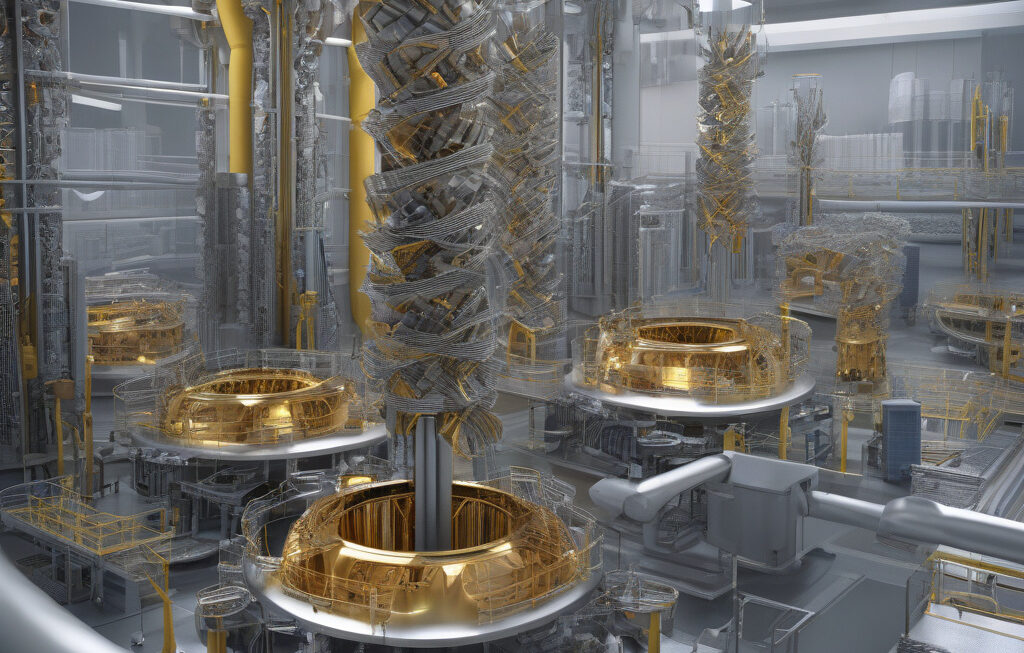Fusion Device Wall Mystery Could Be Unlocked for Pure Plasma with New Nuclear Research
A top global nuclear body has launched a new project to assemble, validate, and distribute cutting-edge research aimed at unraveling the longstanding mystery surrounding fusion device walls. The International Atomic Energy Agency (IAEA) is spearheading this initiative to pave the way for the creation of pure plasma environments within fusion devices, a critical breakthrough that could revolutionize the field of nuclear fusion.
At the heart of the matter lies the challenge posed by the materials used to construct the walls of fusion devices. These materials play a crucial role in containing the superheated plasma that drives the fusion process, but they also introduce impurities that can hinder the efficiency and stability of the reaction. By delving into the fundamental properties of these materials and their interactions with plasma, researchers hope to develop novel solutions that will enable the creation of pristine plasma conditions conducive to sustained fusion reactions.
One of the key objectives of the IAEA project is to leverage advanced experimental techniques and computational modeling to gain a comprehensive understanding of the complex phenomena occurring at the plasma-material interface. By embarking on a systematic exploration of different wall materials, surface treatments, and operating conditions, scientists aim to identify optimal strategies for minimizing impurity contamination and maximizing plasma purity.
The implications of achieving pure plasma conditions in fusion devices are profound. Not only would this advance accelerate progress towards realizing the long-sought goal of practical fusion energy production, but it would also open up new possibilities for exploring exotic plasma regimes with unique scientific and technological implications. From enabling the development of more efficient fusion reactors to facilitating research in areas such as materials science, plasma physics, and nuclear engineering, the benefits of unlocking the mystery of fusion device walls are far-reaching.
To illustrate the significance of this endeavor, consider the example of recent advancements in plasma-facing materials. By harnessing innovative materials such as tungsten-based composites and advanced ceramics, researchers have made significant strides in enhancing the durability and performance of fusion device walls. These materials exhibit superior resistance to erosion, heat flux, and neutron bombardment, thereby prolonging the operational lifespan of fusion reactors and improving overall efficiency.
Furthermore, the integration of novel coating technologies, such as liquid metal divertors and plasma-facing coatings, has shown promise in mitigating plasma-material interactions and reducing impurity influx. These developments underscore the transformative potential of leveraging cutting-edge materials science and engineering principles to address longstanding challenges in fusion research.
As the global community continues to invest in advancing nuclear fusion as a clean, abundant, and sustainable energy source, initiatives like the IAEA project represent critical steps towards overcoming the technical barriers that have impeded progress in this field. By fostering collaboration among leading experts, institutions, and industries, and by prioritizing research efforts that push the boundaries of scientific knowledge, we can accelerate the transition towards a fusion-powered future.
In conclusion, the pursuit of pure plasma environments in fusion devices through targeted nuclear research holds immense promise for unlocking the full potential of nuclear fusion as a viable energy source. By unraveling the mysteries of fusion device walls and harnessing the power of innovative materials and technologies, we are inching closer to realizing a future where clean and limitless energy is not just a dream but a reality.
nuclear fusion, plasma physics, materials science, energy research, technological innovation












